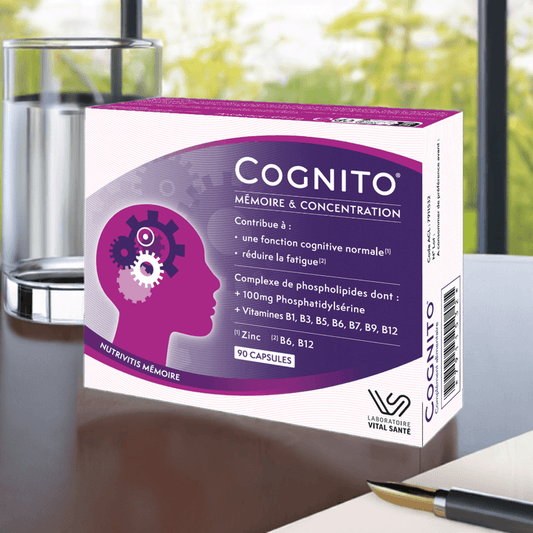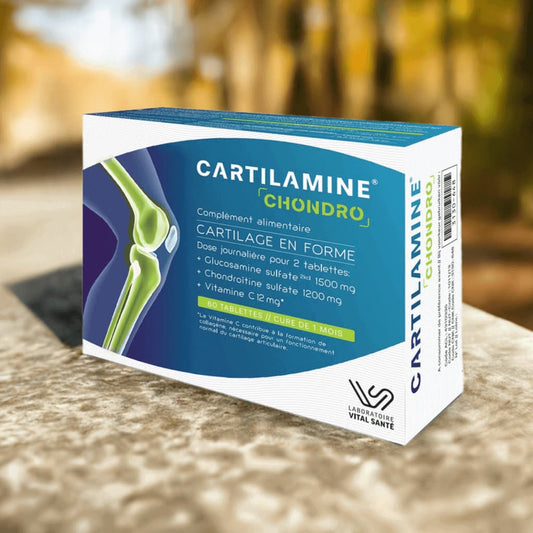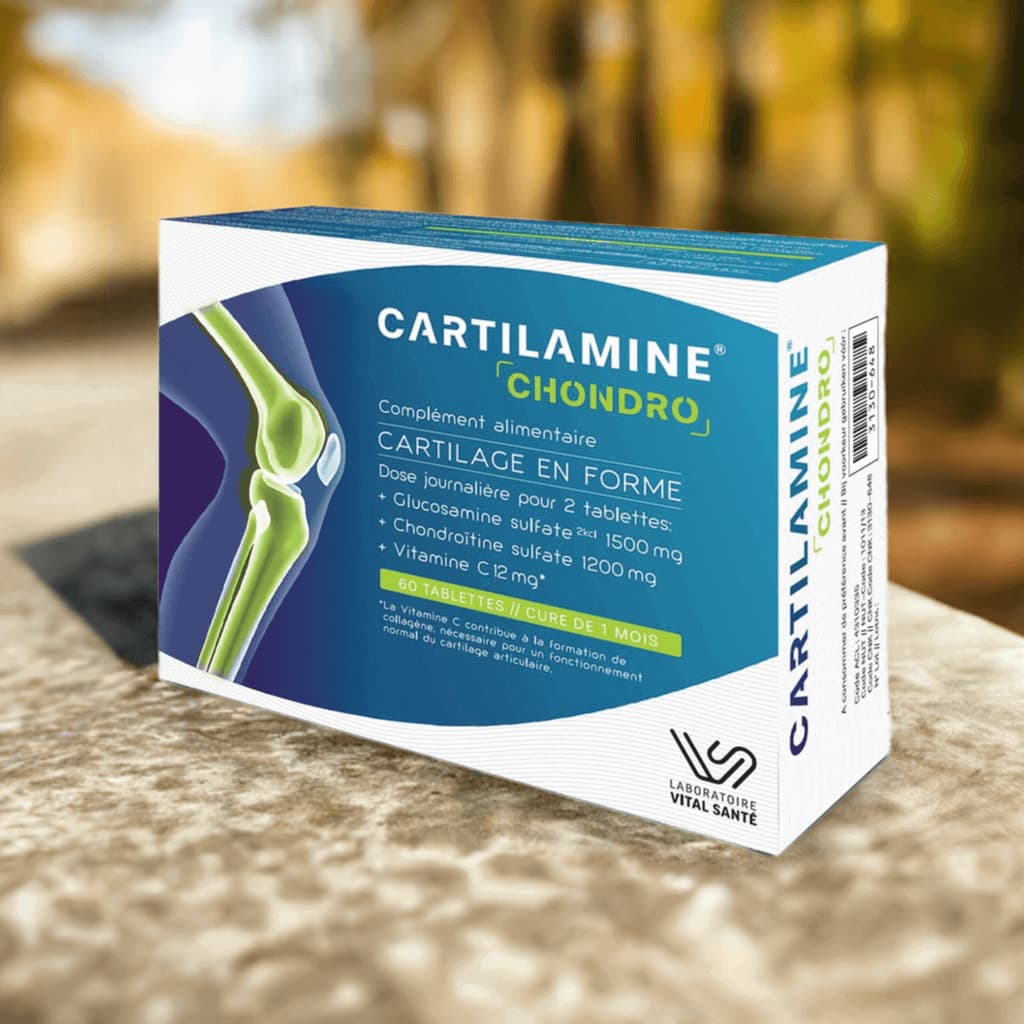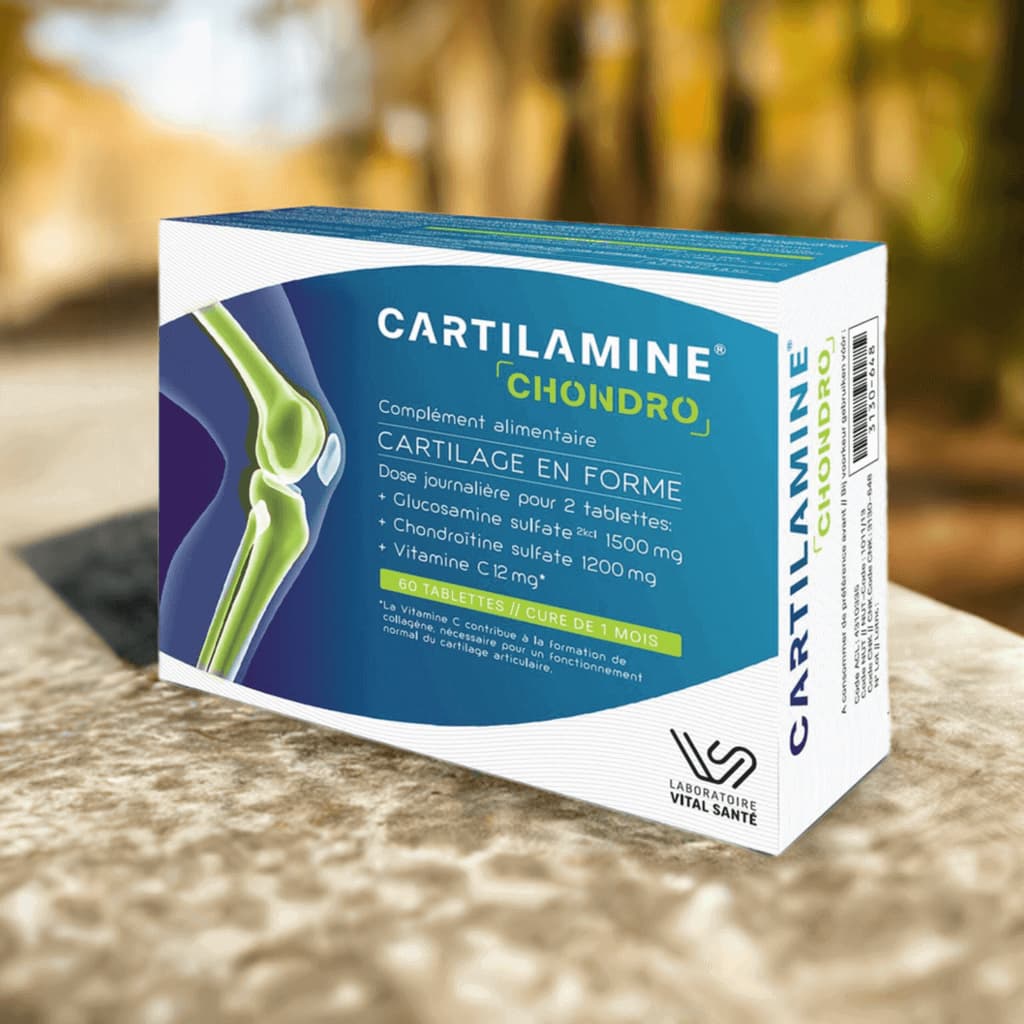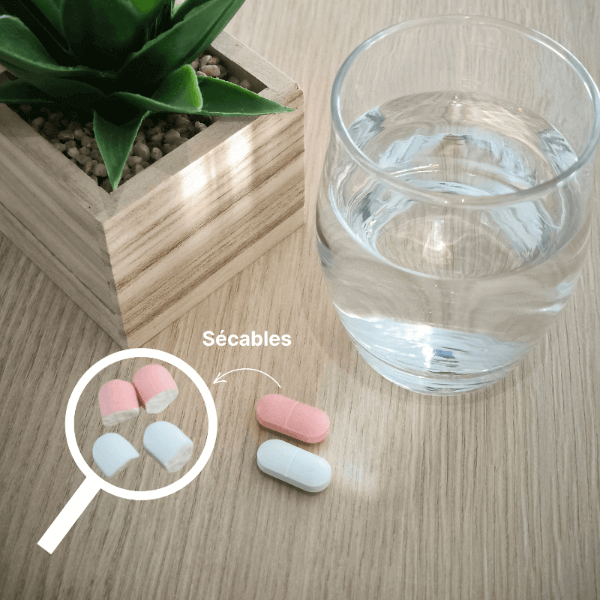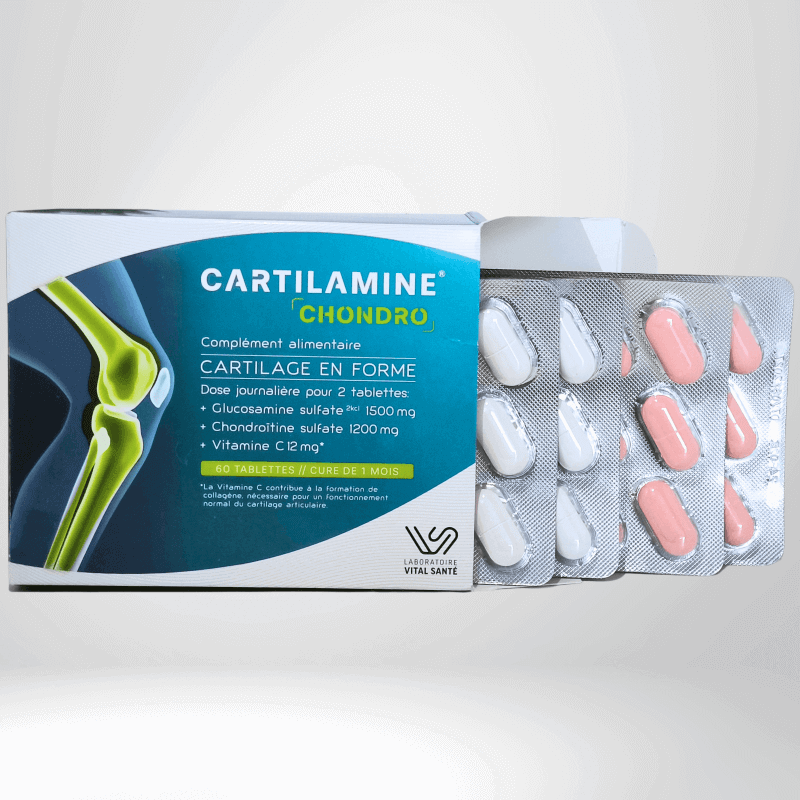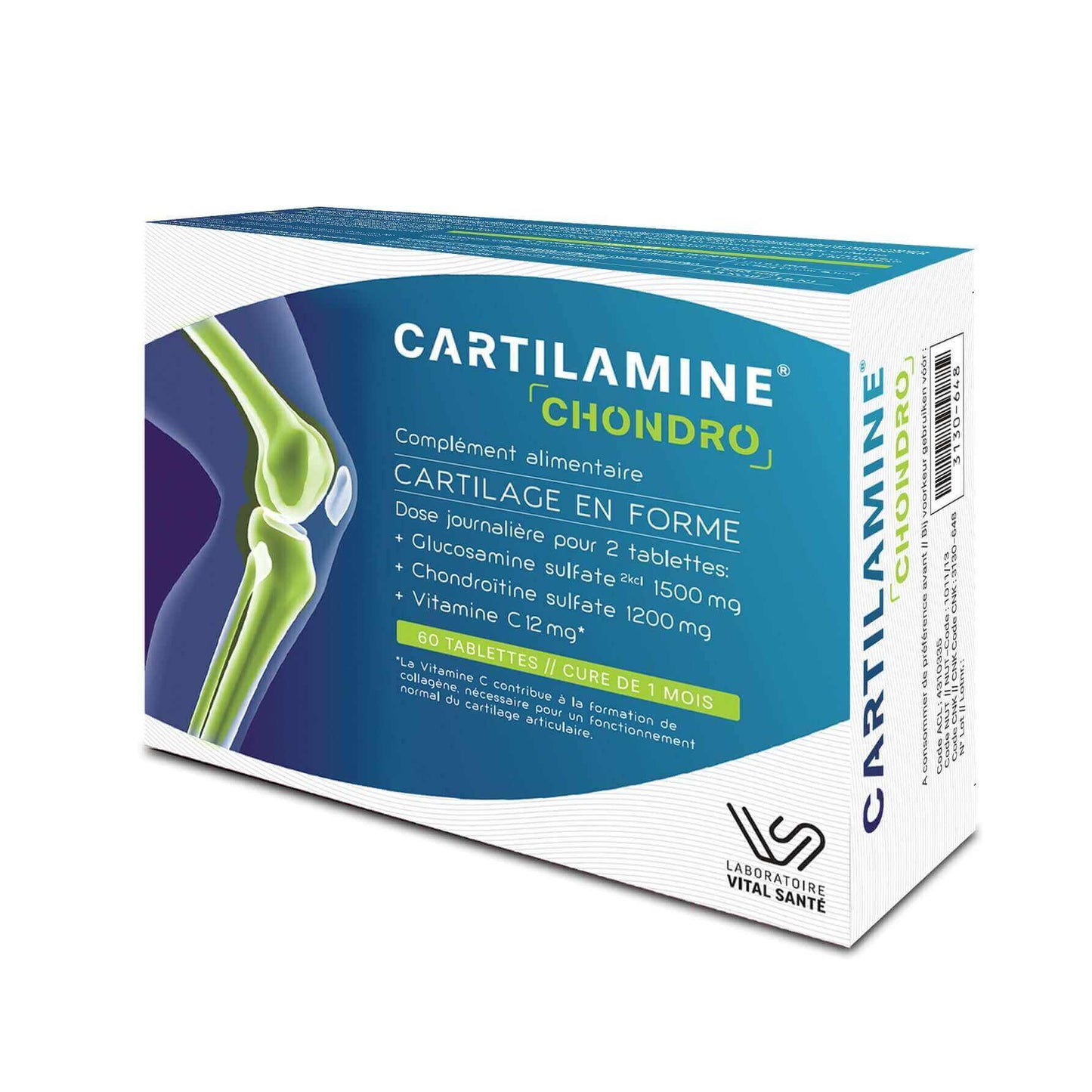
Understanding what we are made of
Partager
What are we made of? Joint weakness explained
Joints are essential to our mobility, but when they become fragile, it can become a real daily nightmare. These joint problems often lead to persistent pain and can last for a long time. But what exactly causes this fragility? Let's dive into the structure of joints and discover their key role.
The structure of joints and their role as shock absorbers
Within every joint, cartilage plays a vital role. It is a substance that separates the two ends of bones and allows them to slide smoothly against each other. Its role? To absorb shocks and distribute loads during movement. Imagine the impact of the thousands of steps we take every day. Cartilage works like a shock absorber, minimizing friction between bones.
Healthy cartilage is smooth, shiny, slightly translucent and highly hydrated. It is thanks to this high water content that cartilage can withstand compression and stretching forces. We can imagine it as a sponge full of water: the more hydrated it is, the better it absorbs shocks.
The role of synovial fluid in joint lubrication
Joints are not only well-oiled pieces of machinery, they also produce their own natural lubricant: synovial fluid. This fluid is secreted by the synovial membrane that lines the joint cavity. Rich in hyaluronic acid, this fluid has a viscous consistency and ensures good lubrication of the joints, allowing smooth movements with minimal friction.
Joint metabolism: a fragile balance
Now that we have seen the structure of the joints, let's see how they function on a daily basis. Cartilage is made up of several fundamental elements that ensure its proper functioning:
Collagen fibers: Think of these fibers as the joists of a building. They form the sturdy structure that gives cartilage its strength.
Proteoglycans: These are long chains, one of the essential components of which is glucosamine. Their main role is to retain water, thus ensuring good hydration of the cartilage.
Hyaluronic acid: This is the natural lubricant of joints. It is made up of thousands of glucosamine units and allows cartilage to remain flexible and resistant.
Chondrocytes: These specialized cells synthesize collagen and proteoglycans, thus participating in the constant renewal of cartilage.
The process of weakening joints
Articular cartilage is a living tissue that is constantly renewing itself. This renewal is ensured by chondrocytes, which destroy old cells and create new ones. However, this process is delicate and can be disrupted. Here are the main stages of joint weakening:
Insufficient renewal of cartilage constituents: The production of proteoglycans and hyaluronic acid decreases, which affects the ability of cartilage to retain water and remain flexible.
Overproduction of metalloproteases: These enzymes, symbolized by scissors, are responsible for the degradation of cartilage. When they are produced in excess, they accelerate the erosion of joints.
Excessive cartilage degradation: Areas of erosion appear, further weakening the joints and making movement painful.
Triggering inflammation: Degraded cartilage debris leaks into the joint cavity, causing an inflammatory response. This inflammation causes pain and perpetuates the vicious cycle of cartilage degradation.
The vicious cycle of inflammation
When cartilage breaks down, cytokines such as IL-1B and TNF-α are released into the joint. These proteins activate inflammatory enzymes such as COX-2, which in turn produce prostaglandins. These amplify pain and inflammation, creating a vicious cycle that accelerates cartilage destruction.
Protecting our joints: a priority
Maintaining this delicate balance is crucial to maintaining the health of our joints. Supplementing with glucosamine and chondroitin can help support the natural processes of cartilage renewal, while helping to control inflammation. Supplements like Cartilamine , rich in these molecules, offer a gentle and natural approach to strengthening joints and slowing their degradation.


